Welcome to our comprehensive guide on lead generation strategies that are guaranteed to elevate your business to new heights. In today’s fast-paced digital landscape, effectively capturing and nurturing leads is paramount to success with one of the 5 best lead generation tools.

Whether you’re a seasoned entrepreneur or just embarking on your business journey, this blog is your one-stop resource for unlocking the power of lead generation tools. We’ll delve into a treasure trove of strategies, each designed to not only attract potential customers but also to convert them into loyal advocates of your brand.
Lead Generation Tools & Strategies
From enticing free trials and harnessing the prowess of social media advertising to cultivating a network of customer advocates, we’ve got you covered. So, let’s embark on this enlightening journey together, as we explore, dissect, and demystify the art of lead generation in the modern business landscape.
Point 97: Offer free trials or consultations for a limited period.
In the world of lead generation, offering free trials or consultations can be a game-changer. By letting potential customers experience your product or service firsthand, you’re building trust and showing them the value you bring to the table.
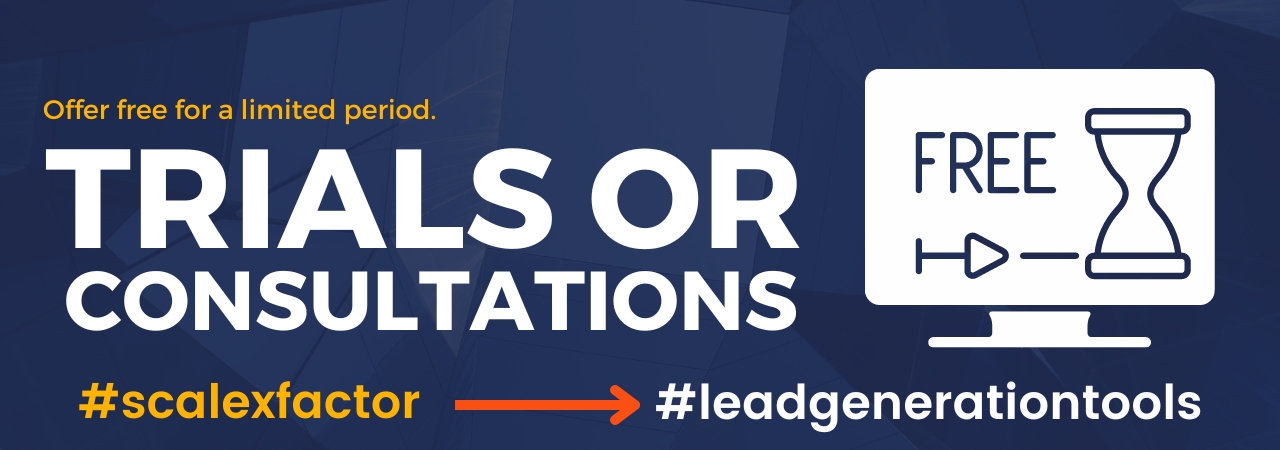
Limited-period offers create a sense of urgency, pushing prospects to act swiftly. This approach is a win-win – they get a taste of what you offer, and you get a chance to showcase your expertise.
Pros:
- High Engagement: Free trials spark curiosity and attract more potential leads.
- Showcase Value: Demonstrates the benefits of your product or service in a practical way.
- Trust Building: Builds credibility and trust as customers experience real results.
- Conversion Boost: Urgency from limited-time offers can accelerate lead conversions.
- Feedback Opportunity: Gather valuable feedback to improve your offering.
Cons:
- Costs: Providing free trials might strain resources without guaranteed conversions.
- Unqualified Leads: Some leads might just be after the freebie, not interested in purchasing.
- Implementation Time: Setting up trials requires time and effort to ensure a smooth experience.
- Cannibalization: Existing paying customers might switch to free trials, impacting revenue.
- Conversion Rate: Not all trial users will convert into paying customers.
FAQs:
- How long should a free trial last?
- Typically, 7 to 14 days is effective, but it depends on your product complexity.
- Can I limit the features in the trial version?
- Yes, you can offer a limited-feature trial to entice users to upgrade.
- What if users cancel during the trial?
- Use exit surveys to understand their reasons and improve your offering.
- Should I collect payment information upfront?
- Consider this for smoother conversion post-trial, but ensure transparent terms.
- How do I prevent misuse of free trials?
- Implement strong user authentication and terms of use to discourage abuse.
Point 98: Leverage social media advertising platforms like Facebook Lead Ads.
Social media isn’t just for connecting with friends – it’s a goldmine for lead generation. Facebook Lead Ads, for instance, let you capture leads directly from the platform.
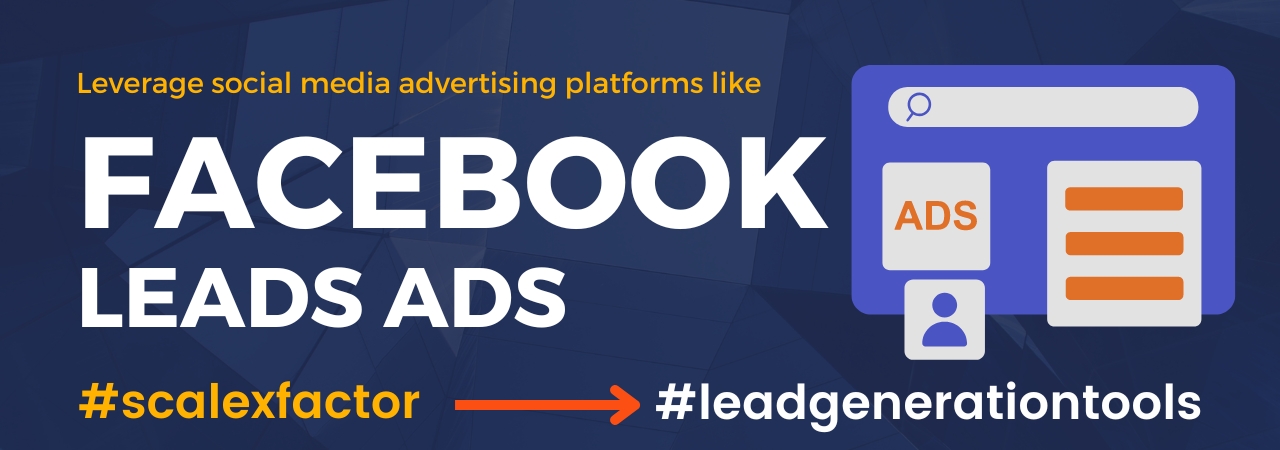
With eye-catching visuals and compelling content, you can entice users to share their information with just a click. Plus, these ads are optimized for mobile, meeting users where they are, and simplifying the lead capture process.
Pros:
- Wide Reach: Social media platforms have billions of users, expanding your potential audience.
- Precise Targeting: Ad platforms allow you to target specific demographics, ensuring quality leads.
- Convenient: Users can submit their info without leaving the platform, boosting conversion rates.
- Cost-Efficient: Social ads often have a lower cost per lead compared to traditional methods.
- Immediate Interaction: Immediate engagement via social media leads to quicker responses.
Cons:
- Competition: The crowded social media landscape requires exceptional content to stand out.
- Ad Fatigue: Overexposure to ads can lead to users ignoring or blocking your content.
- Privacy Concerns: Users might hesitate to share information due to data privacy concerns.
- Limited Data: Lead Ads might not provide as much information as forms on your website.
- Algorithm Changes: Platform algorithm shifts can impact ad reach and effectiveness.
FAQs:
- Can I customize the information I ask for in Lead Ads?
- Yes, you can choose the form fields to collect specific data.
- How do I make my Lead Ads more engaging?
- Use compelling visuals, concise copy, and a clear call-to-action (CTA).
- What happens after a user submits their info?
- You can set up automated responses or follow-ups to nurture leads.
- Are Lead Ads suitable for B2B businesses?
- Yes, with the right targeting and content, Lead Ads can be effective for B2B lead generation.
- How do I measure the success of my Lead Ads campaign?
- Track metrics like click-through rate (CTR), conversion rate, and cost per lead (CPL) in ad analytics.
Point 99: Develop a customer advocacy program to encourage referrals.
Your happy customers can be your best advocates. Creating a customer advocacy program taps into this potential, motivating satisfied clients to spread the word about your business.
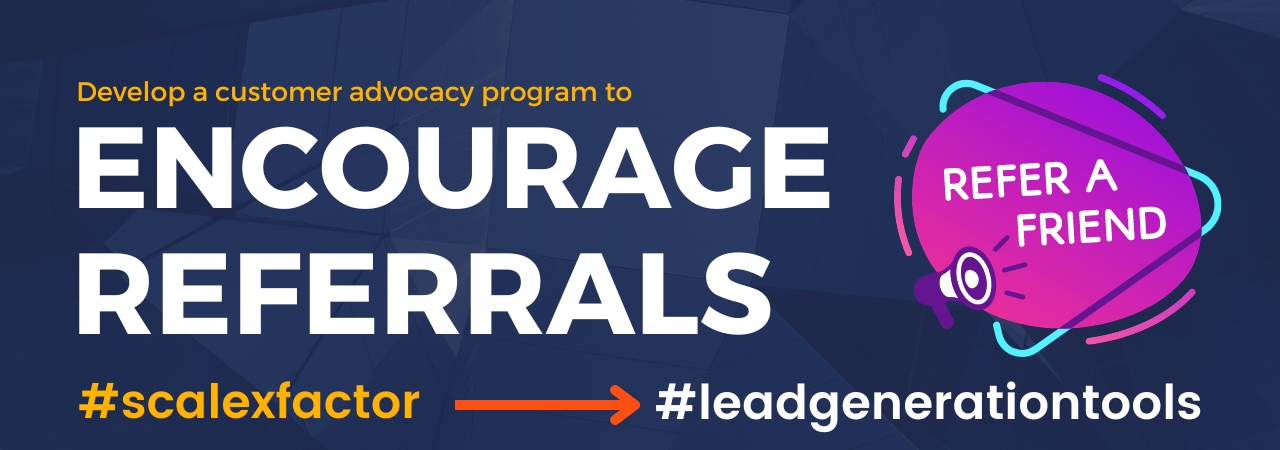
Word-of-mouth recommendations hold immense influence and trust, making them a potent source of high-quality leads.
Pros:
- Authenticity: Recommendations from real customers carry authenticity and credibility.
- Cost-Effective: Referral leads often have a lower acquisition cost.
- Higher Conversion: Referred leads tend to convert at a higher rate.
- Brand Loyalty: Advocates feel more connected and loyal to your brand.
- Extended Reach: Your customer network can introduce you to new audiences.
Cons:
- Time-Consuming: Building and managing a referral program demands time and effort.
- Quality Control: Not all referrals might be a good fit for your business.
- Dependency: Relying solely on referrals may limit diversification of lead sources.
- Initial Setup: Developing a robust advocacy program requires careful planning.
- Incentive Balance: Finding the right incentives to motivate advocates without overspending.
FAQs:
- How do I identify potential advocates among my customers?
- Look for customers who’ve given positive feedback, engaged frequently, or achieved notable success with your product/service.
- What rewards can I offer to advocates?
- Offer discounts, exclusive content, early access, or even monetary rewards for successful referrals.
- How do I track and manage referrals?
- Use referral tracking software to monitor referrals and reward advocates accordingly.
- Can B2B businesses benefit from customer advocacy programs?
- Absolutely, B2B customers can also become advocates and refer your services to their industry peers.
- How do I prevent advocates from referring irrelevant leads?
- Provide clear guidelines and criteria for ideal referrals to ensure quality.
Point 100: Use heat mapping and website analytics to optimize lead capture elements on your site.
Your website is a virtual storefront, and just like a physical store, it needs to be optimized for maximum customer engagement.
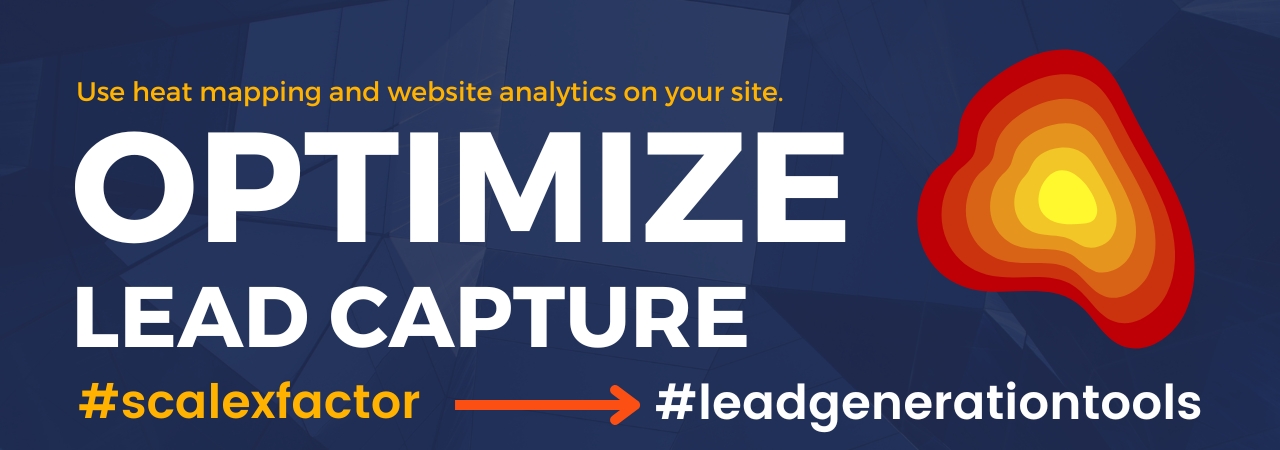
Heat mapping and website analytics tools give you a deep dive into user behavior, showing you where they click, scroll, and linger. This valuable data lets you fine-tune your lead capture elements, making sure they’re in prime positions for conversion.
Pros:
- Data-Driven Insights: Heat maps provide visual data on user interactions, guiding optimizations.
- Improved User Experience: Enhance your website’s usability and navigation for better lead engagement.
- Conversion Optimization: Analyzing user behavior helps you strategically place CTAs and forms.
- Reduced Bounce Rates: A user-friendly website keeps visitors engaged, reducing bounce rates.
- Continuous Improvement: Regular analysis and adjustments lead to ongoing optimization.
Cons:
- Learning Curve: Understanding and interpreting heat map and analytics data can be challenging.
- Time-Intensive: Regular monitoring and analysis require time and attention.
- Technical Expertise: Implementing and interpreting analytics tools might require technical skills.
- Overwhelm: Too much data can lead to analysis paralysis; focus on key insights.
- User Privacy: Ensure compliance with data protection regulations when collecting user data.
FAQs:
- What is a heat map, and how does it work?
- A heat map visualizes user activity on your site, with warmer colors indicating higher interaction.
- How often should I analyze website data?
- Regular monthly or quarterly reviews are recommended for consistent optimization.
- What changes can I make based on heat map data?
- Adjust the placement of CTAs, forms, and important content to align with user behavior.
- Are there free website analytics tools available?
- Yes, tools like Google Analytics offer robust free options for website analysis.
- What should I do if users are dropping off from a certain page?
- Investigate the page’s content, load times, and layout to identify areas for improvement.
Point101 : Host Virtual Reality (VR) or Augmented Reality (AR) Experiences
In the realm of lead generation, stepping into the virtual world can be a game-changer. Virtual Reality (VR) and Augmented Reality (AR) experiences have the power to captivate your audience like never before.
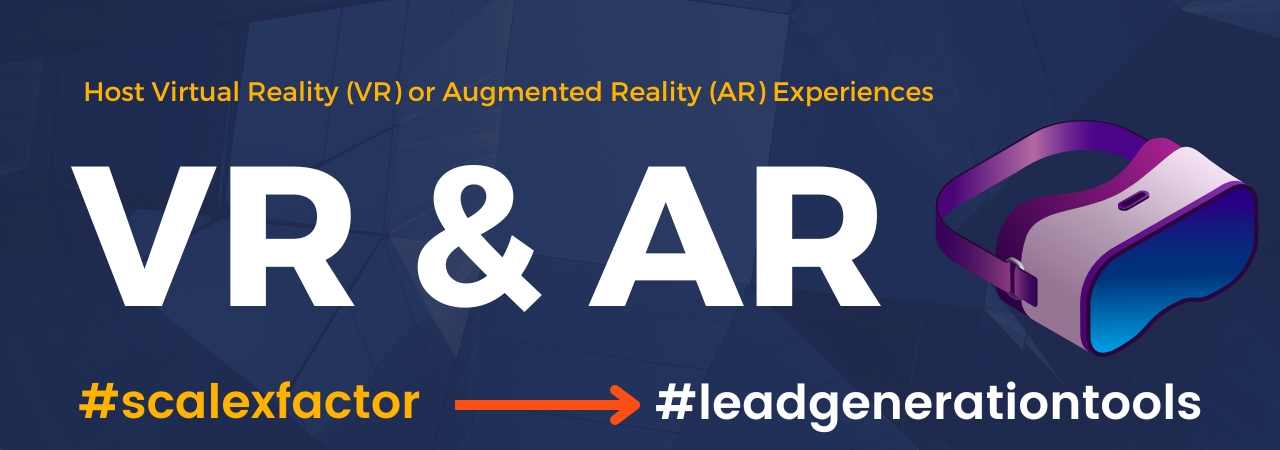
Imagine potential customers immersing themselves in a virtual showroom, exploring your products from every angle, or visualizing how your service can transform their lives – all from the comfort of their own space.
Pros:
- Engagement Amplification: VR/AR experiences provide a unique and captivating way to engage prospects.
- Memorable Impressions: Immersive encounters leave lasting impressions, boosting brand recall.
- Interactive Storytelling: Narrate your brand story and value proposition in an engaging, interactive manner.
- Emotion Elicitation: Stir emotions and create a strong connection through impactful experiences.
- Lead Quality: Those investing time in VR/AR are likely more interested, improving lead quality.
Cons:
- Technical Barriers: Creating and accessing VR/AR content may require specific hardware or apps.
- Cost Intensity: Developing VR/AR experiences can be costly in terms of time and resources.
- Learning Curve: Users unfamiliar with VR/AR might find the learning curve steep.
- Limited Reach: VR/AR experiences might exclude audiences without compatible devices.
- Content Complexity: Ensuring high-quality, glitch-free experiences demands technical expertise.
FAQs:
- Do users need special devices for VR/AR experiences?
- Yes, VR headsets for VR experiences and smartphones/tablets with AR capabilities for AR experiences.
- Can small businesses benefit from VR/AR?
- Absolutely, VR/AR can differentiate your brand and make a lasting impression.
- How can I measure the effectiveness of VR/AR campaigns?
- Analyze metrics like engagement time, interactions, and conversion rates.
- Are there user-friendly tools to create VR/AR content?
- Yes, there are platforms and software that simplify VR/AR content creation.
- Can VR/AR work for B2B lead generation?
- Absolutely, B2B prospects can explore complex products or visualize solutions using VR/AR.
Transition Words: Furthermore, Additionally, In addition, On the other hand, Nevertheless, Consequently, As a result, Moreover, In contrast, However, Therefore




